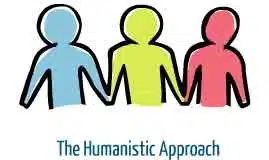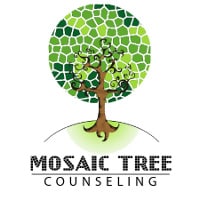Humanistic-Psychology
This is also taken from Maria’s dissertation. She believes in the humanistic approach to therapy.
The Impact of Humanistic Psychology
Bruce Wampold (2012) asserted that all psychotherapies are humanistic. In all psychotherapy, there is a relationship between the therapist and client (Gelso, 2011). There is evidence which supports that human connection in therapy helps more than the techniques themselves (Elkins, 2016). According to Wampold’s (2001) research, techniques have little to do with therapeutic outcomes, as the work of therapy can’t begin until an initial bond is made (Wampold, 2015).

Definition and History of Humanistic Psychology
Humanism is defined as a philosophical perspective whose subject matter is the whole human being (Schneider & Langle, 2012). Humanism focuses on the personal, interpersonal, and contextual dimensions of therapy (Schneider & Langle, 2012). In psychotherapy, humanism places special emphasis on “the personal, interpersonal, and contextual dimensions of therapy and on clients’ reflections on their relationship with self, others, and the larger psychosocial world” (Schneider & Langle, 2012, p. 428). It asks what it means to be fully human (Schneider, Pierson, & Bugental, 2015). Humanistic psychology peaked in the 1950s and 1960s, in reaction to Freudian psychology and practices of behaviorism (Elkins, 2009). In 1943, Abraham Maslow developed the hierarchy of needs called A Theory of Human Motivation (Maslow, 1943). In 1951, Carl Rogers published Client-Centered Therapy, which described his humanistic, client-directed approach to therapy. In 1961, the Journal of Humanistic Psychology was established (Greening, 1985). Carl Rogers (1961) believed that being genuine and real in the therapeutic relationship is very important for the likelihood of positive change in the client, and was also known for developing client-centered therapy. In 1962 the American Association for Humanistic Psychology was formed and Maslow published Toward a Psychology of Being, in which he described humanistic psychology as the “third force” in psychology (Maslow, 1962). By 1971, humanistic psychology became an APA (American Psychological Association) division (Aanstoos, Serlin, & Greening, 2000).
Qualitative Studies on Humanistic Psychology
Using data from a naturalistic, longitudinal study, researchers Cronin, Brand, & Mattanah (2014) investigated the impact of therapeutic alliance on the role in treatment outcome. They found that patients with higher self-rated alliance had fewer symptoms of dissociation, PTSD, and general distress (Cronin, Brand, & Mattanah, 2014). Another qualitative research study analyzed the negative effects of psychological treatments by interviewing 74 clinicians who primarily identified themselves as cognitive behavioral therapists (Bystedt, Rozental, Andersson, Boettcher, & Carlbring, 2014). Several clinicians from this study reported that not establishing a strong therapeutic alliance between the therapist and client was a potential risk factor for a treatment to fail (Bystedt, Rozental, Andersson, Boettcher, & Carlbring, 2014). Another qualitative study used an archival database of veteran therapists who were trained by two recognized supervisors, one of whom provided weekly group supervision (Laska, Smith, Wislocki, Minami, & Wampold, 2013). Laska, Smith, Wislocki, Minami, & Wampold (2013) used the single case study design, in which the supervisor was interviewed to determine what criteria she used to rate therapy effectiveness. The supervisor discussed how the genuineness of the therapist and alliance building is an important factor in the change process (Laska, Smith, Wislocki, Minami, & Wampold, 2013).
Humanistic Psychology is the Best Predictor of Outcomes
Research evidence points to a consistent relationship between the therapeutic conditions and outcomes (Elliott et al., 2013; Elliott, Bohart, Watson & Greenberg, 2011; Farber & Doolin, 2011; Horvath, Del Re, Flückiger & Symonds, 2011; Kolden, Klein, Wang, & Austin, 2011). Anderson, Ogles, Patterson, Lambert, & Vermeersch (2009) researched the characteristics of effective therapists by measuring therapists’ facilitative interpersonal skills, where therapists respond to video simulations of challenging client-therapist interactions. While other variables were related to therapist demographics, experience level, and social skills, only therapists’ facilitative interpersonal skills were related to the outcomes achieved (Anderson, Ogles, Patterson, Lambert, & Vermeersch, 2009). There are many studies showing that therapist characteristics are a unique predictor of outcomes in therapy (Wampold, 2001). Bruce Wampold stated the following: “there is increasing evidence that it is the therapist and not the treatment per se that is responsible for therapeutic change” (Wampold, 2006, p. 868). There is increased awareness in regard to integrating humanistic psychology into therapeutic modalities (Price, 2011, Norcross & Wampold, 2011; Dinger, Strack, Leichsenring, Wilmers, & Schauenbirg, 2008; Okiishi, Lambert, Nielsen, & Ogles, 2003; Wampold & Bolt, 2006). According to a number of research studies, the relationship between the therapist and the client is the best predictor of treatment outcomes, more than the approach (Boisvert & Faust 2003).
#3 Rapport Building and Therapeutic Alliance
#3 Rapport Building and Therapeutic Alliance
Therapy Modalities
Abuse & Neglect
ADHD
Anxiety
Bipolar
Career Counseling
Communication Difficulties
Depression
Eating Disorders
Employee Assistance
Impulsive Behavior
Obsessive Compulsive Disorder (OCD)
Oppositional Defiant Disorder (ODD)
Play Therapy
Posttraumatic Stress Disorder (PTSD)
Self Esteem
Self Mutilation
Shop
Social Skills

